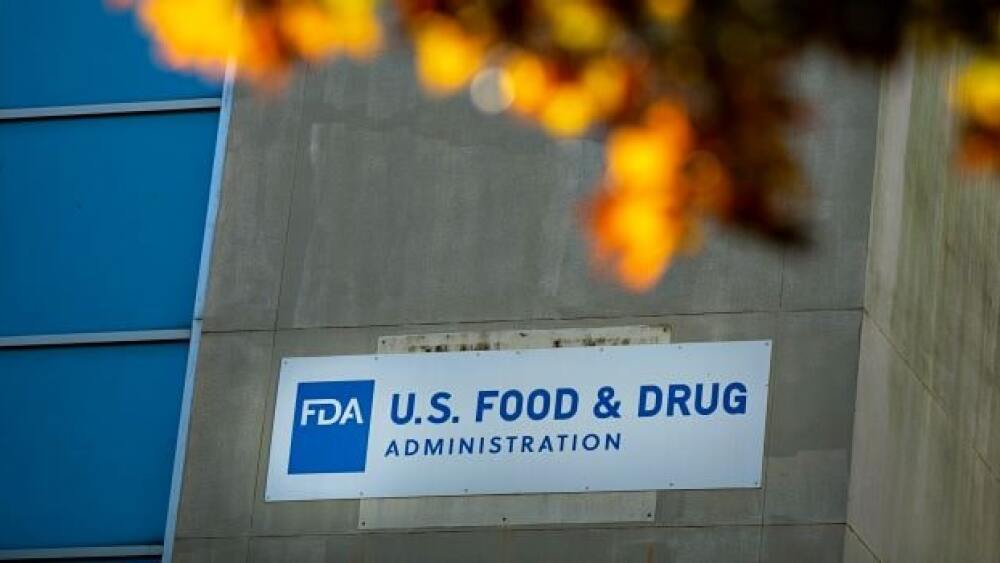Levitt has practiced law for over 20 years in the FDA regulatory space. Previously chief regulatory counsel for Pfizer Inc., Levitt has had extensive experience working with an interdisciplinary team of scientists, executives and lawyers to push a candidate to market.
Jason Armond / Los Angeles Times via Getty Images
A funny consequence of a global pandemic is the newfound popularity of the U.S. Food and Drug Administration (FDA) – a once arcane, but now universal dinner table conversation topic.
“It’s become much more widespread to talk about these authorities and issues,” Geoffrey Levitt, recently named a co-chair of the Life Sciences Policy and Regulatory Group at DLA Piper, said with a laugh. “Now, anybody who reads the media can tell you about Emergency Use Authorizations (EUAs) and vaccine development – it’s very interesting.”
Levitt has practiced law for over 20 years in the FDA regulatory space. Previously chief regulatory counsel for Pfizer Inc., Levitt has had extensive experience working with an interdisciplinary team of scientists, executives and lawyers to push a candidate to market.
“Working with the science people, the technical people, the businesspeople – that is very, very stimulating and fun,” Levitt said. “Now, at the firm [DLA Piper], you’re working with teams of lawyers and giving clients advice on the problems that they [the pharmaceutical companies] are having.”
Levitt’s specialization in FDA regulation, particularly as it relates to larger scale pharmaceutical companies, has allowed him to bridge the divide that sometimes exists between regulatory oversight and scientific innovation. He has also seen the biotechnology space evolve rapidly as more and more exciting candidates are brought to market.
“One trend is the increased emphasis on expedited approval and expedited review of novel medical products, especially for unmet medical needs,” Levitt said. “Over the years, a number of pathways have been put in place, including breakthrough therapies, accelerated approvals and the like. Needless to say, in the current pandemic, this trend has only accelerated further.”
This acceleration in pharmaceutical development and deployment can be put into perspective through comparing two examples: the first influenza vaccine, developed in the 1940s, versus the most recent set of COVID-19 vaccines.
In 1941, Thomas Francis and Jonas Salk had begun development of an influenza vaccine in order to combat the major flu outbreaks that were spreading mortality throughout American troops during World War II. They found that influenza viruses grown in chicken eggs could be rendered harmless by formaldehyde. When injected into humans, these deactivated viruses would still induce a strong enough immune response to provide protection should the real virus appear. In the fall of 1945, the U.S. Army inoculated every military member, and the genesis for the modern flu vaccine was born.
Francis and Salk’s vaccine, developed during a time of significant need, took over four years to develop and deploy. By contrast, the first vaccine for COVID-19 was approved around a year after the first documented cases of the virus in December of 2019.
By March of 2020, COVID-19 was classified as a pandemic by the World Health Organization. In July of that same year, Pfizer and BioNTech had started Phase III clinical trials of its vaccine, with Moderna and Johnson & Johnson close behind. Finally, in December of 2020, the FDA granted Emergency Use Authorization to the first COVID-19 vaccine, beginning the rapid ramping-up of getting shots into arms.
The differences between these two pharmaceutical development stories demonstrate extraordinary advances in modern medicine, international collaboration and technological innovation. It’s also a wake-up call, in some sense, to re-examine the pathway by which these life-saving products become approved.
“The Emergency Use Authorization was intended to be a very rare and exceptional process,” Levitt said. “It has actually become the default process for products both therapeutic and diagnostic in the whole COVID space; its use has expanded tremendously now. In the wake of COVID, it’s going to be time to examine the entire field of how we review new products and say, ‘What can we do better? How can we further streamline the process, both to reduce costs but to also get products out to patients faster, without sacrificing scientific standards or quality?’”
To Levitt, this era of expedited medical innovation also marks a sign of a broader shift in focus for the biotechnology and pharmaceutical industries to a more “patient-centric” development strategy.
“I think that this is a very positive development. What it means is that you are concentrating on what the patient needs for treating or preventing their health conditions,” Levitt explained. “There’s a shift in emphasis from the needs of the regulator, or the needs of industry, or whatever other player, to really put the needs of the patient at the center of the whole process.”
Based on Levitt’s regulatory expertise, there are several things that should be integrated into the development of a successful medical product. Pharmaceutical and biotechnology companies output products that influence human lives at a large scale. With this impact comes the responsibility of respecting policy, bioethical, and regulatory advice.
“The entire medical product regulatory process does not exist in a vacuum,” Levitt said. “It’s very much embedded in a broader space of science, policy, and ethics, that you have to understand in order to be successful in the space.”
This means thinking about product costs in a way that maximizes allocation of health care resources to patients. Or, via a bioethical framework, by ensuring that investigational treatments or products have an important medical purpose, so as to not expose patients unnecessarily to potential harm.
If he would give any advice to companies just starting out, Levitt emphasizes the importance of flexibility and collaboration in the clinical development program.
“We have a healthcare ecosystem that is made up of a lot of different players, including government agencies, academics, health care professionals, and of course, patients or patient groups,” he added. “That’s why it is so important to have those regulatory and policy antennae as part of your clinical development program.”
But, at the end of the day, it all boils down to doing good for patients. In his future work as a leader at DLA Piper, Levitt hopes to continue to elevate patient centricity as a key value for medical product development.
“I take patient centricity as a very, very important value. I think that our clients take patient centricity as a very, very important value,” Levitt said. “We try to work with our clients to achieve that, and to help them navigate these complex issues in a space that is constantly changing due to scientific developments.”





